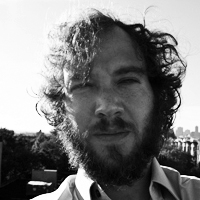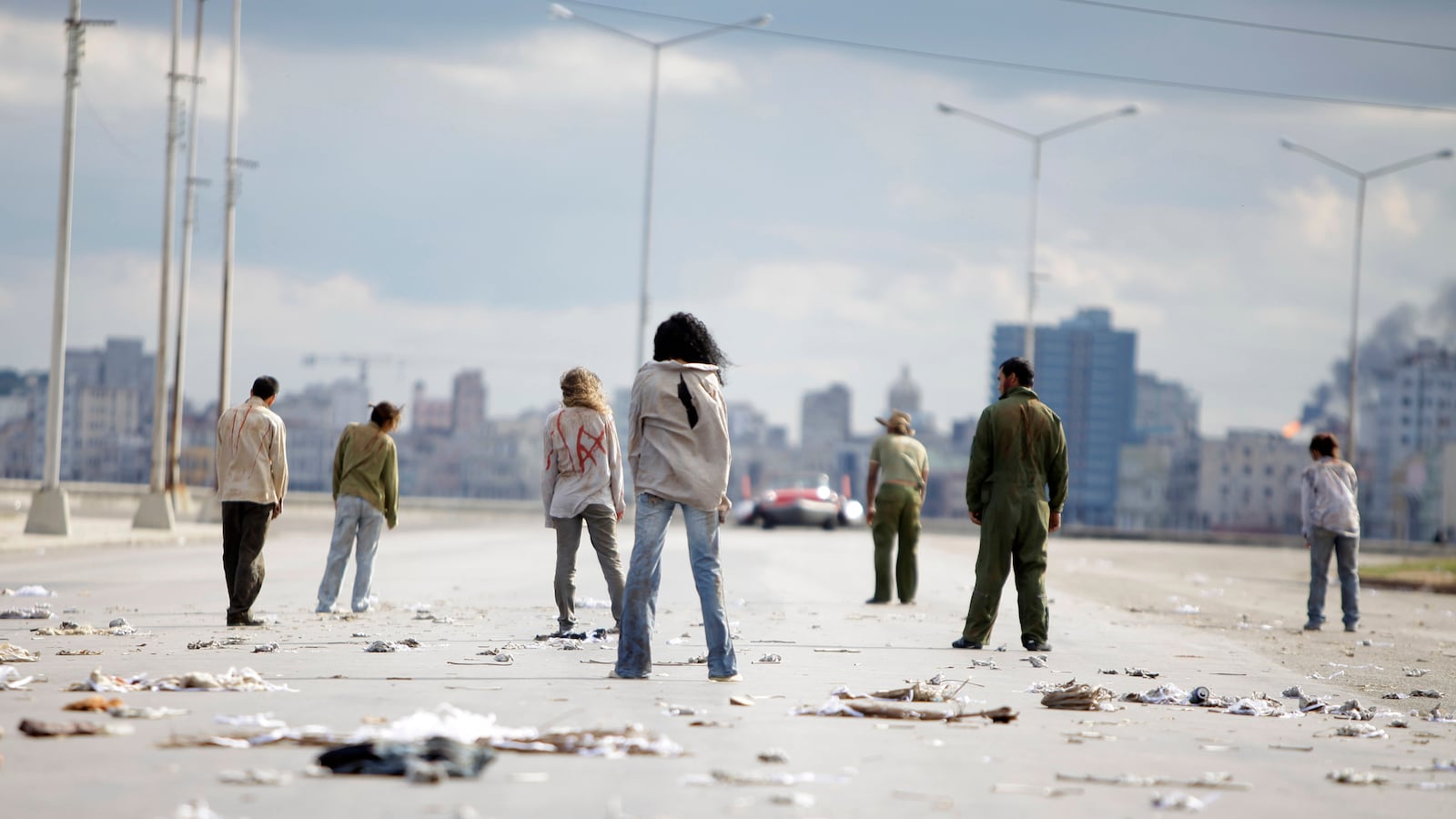And what is to be done about the zombies? The most recent wave has occupied our pop cultural landscape since at least 2002—and with no sign of relenting as trailers for Brad Pitt’s adaptation of World War Z attest. Clear incursions have been launched over the literary barricades by Colson Whitehead’s Zone One, Rick Moody’s Four Fingers of Death, and Cormac McCarthy’s The Road (post-apocalyptic cannibals taken as nearly synonymous). They even got Jane Austen. As they shamble, stagger, and scratch their way across our screens, infecting what they catch, some may ask, how to explain the pervasiveness of these undead. By understanding them, as n+1 did the hipster, will we at last put the phenomenon to rest?

In this regard, Bennett Sims’s philosophical genre-bending debut, A Questionable Shape, is nothing to be mortified by. Mike Vermaelen narrates in present-time his adventures, or wanderings, in search of same alongside best friend Matt Mazoch, as Matt attempts to find his father, long missing and presumed zombie. Government pamphlets on the plague suggest the undead are motivated by glimmers of association from their vacated lives to return to loci of cherished significance. Or, as Sims finely puts it, the zombie will be found “moving blindly along a vector of memory.” Each morning, Matt arrives at Mike and girlfriend Rachel’s apartment. While Rachel goes to volunteer at a FEMA shelter, Mike and Matt patrol those geographic coordinates most likely to compel Mr. Mazoch’s return. Rachel reluctantly accepts Mike’s participation in the Mazoch family project.
A Questionable Shape presents the yang to the yin of Whitehead’s Zone One, with chess games, a dinner invitation, and even a romantic excursion. Matt and Mike’s search transpires over a tense week on the outskirts of Baton Rouge, post-endemic. Oh, it was bad, we are assured. For some places, such as Cuba, very much so. But all in all, at least in the ol’ U.S. of A., things may just be turning a corner for the good.
A sunny novel about zombies?, the zombie adherent will ask, fighting not to moan protest. Can’t Sims grasp that integral to the genre is the fact zombies always overwhelm us? This convention (unending onslaught) and many others (hands reaching up from graves, exploding heads, drawn-out chases) are avoided for what amounts to, at heart, a quest to understand the experience of the zombie—and how that experience may, or may not, reflect back on our own.
Advance word compares Sims’ prose favorably with that of Thomas Bernhard and David Foster Wallace, and this comparison holds some water: echoes of Bernhard’s hammering circularity and Wallace’s bright mind that can’t stop making connections are both present. In moments, especially early on, the circularity of Sims can drag, as if the narrator Mike had forgotten what he has already informed his readers. And while the Wallace-style footnotes usually are deployed to deepening effect (the novel’s dedication reads “for Dave”—Sims was a student of Wallace’s), certain footnotes veer toward the gratuitous or cute. For example, the Geoff Dyer–like digression that leads to this line: “Is stucco architecture’s toast?” Or on Mr. Mazoch’s transformation to zombie:
“You’d have to say that he was cleaved in twain, leaving both a spiritual remainder and a bodily remainder, and that these opposite supernatural energies, diverging from his death, went haunting in different directions: the one inside, the other out … I can’t help wondering, though, what would happen if the undead corpse and the specter of Mr. Mazoch ever met each other. I imagine the mutual shock, the dropped monocles: ‘My good sir, I am Mr. Mazoch.’ ‘But I’m afraid that’s quite impossible—for you see, I am Mr. Mazoch.”
This quality doesn’t have to be problematic. Mike and Rachel’s relationship is portrayed with depth, the bond of two lovers committed to each other despite a zombie plague, a claustrophobic daily routine, the mental and physical wanderings of Mike. A Questionable Shape may just figure as the first zombie novel recommendable as a Valentine’s Day gift, or at least be fitting for those going into counseling. Lovers will read the words to each other: “Is stucco architecture’s toast?” The novel’s overt stylistic mimicry and repetitive tendencies sustain a sense of the zombielike (a writer who does pseudo–Henry James is, in this light, a zombie James). If the force of Mike’s interiority and the novel’s conceptual underpinnings nearly leave behind the bulwark of the plot, it was never plot per se that mattered.
The point is where the mind goes, and, in that respect, Sims has his thematic territory down cold. He shines a lantern on how the crux of the zombie motif might relate to the style of David Foster Wallace, the uncanny feeling Wallace’s presence in prose continues to create: “By opening up a subjacent space on the page, the footnote digs a grave in the text … The words that are banished there are like thoughts that the text has repressed … if the text were ever infected, they are the words that would guide it.”
In A Questionable Shape, the zombie is practically everywhere. Even when none can be found in the narrative proper. Present, they are not threatening, not necessarily. Just ragged, wavering. Mike sees zombies in Joyce’s Michael Furrey, in the theories of Heidegger, in the films of Hitchcock, in the poetry of Frost: “‘Something there is that doesn’t love a wall.’”
To describe the appearance of a zombie’s eye and the film through which the zombie must see the world, Mike studies a smear on the glass of Matt Mazoch’s rearview mirror, affixing to the image the power of symbol. A.I. enthusiasts refer to a kind of rapture, the Singularity, wherein the entirety of the world’s knowledge will reside online, online systems, like Hal 9000, becoming conscious and enacting evolution’s next step, the one, beyond which, actual human existence would prove vestigial. Imagine, were such a reckoning ever poised to occur, how we would appear to this tech deity, in our persistence as a species, pressing fingertips repeatedly to the glass that separates each of us from all the knowledge there is to know.






